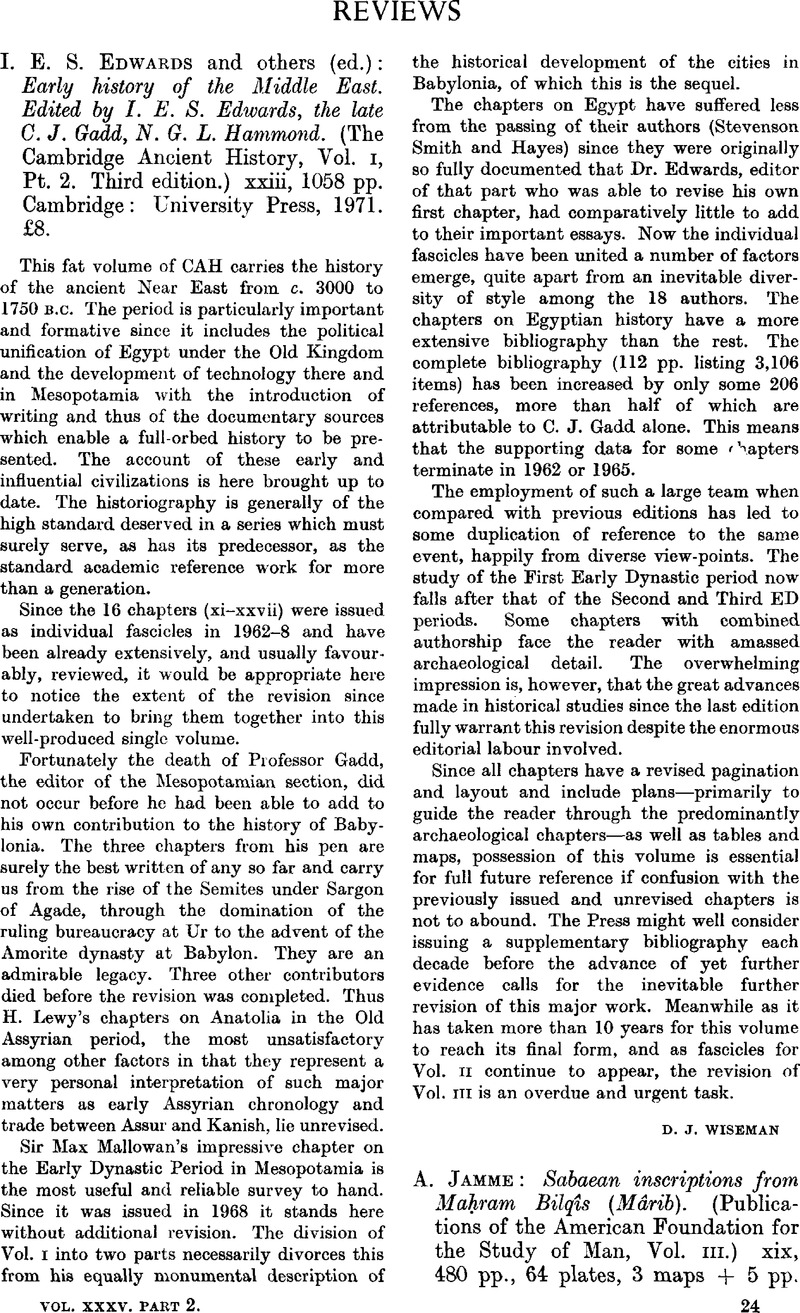No CrossRef data available.
Published online by Cambridge University Press: 24 December 2009

* The Editorial Board regrets the late appearance of this review. In the light of the importance of Jamme's work and A. F. L. Beeston's critical assessment it was, however, clearly desirable to allow publication even at this late stage.
1 ‘Eine altsüdarabische Sühne-Inschrift’, in Hebräische Wortforschung, Festschrift … W. Baumgartner, Leiden, 1967, 106–13Google Scholar [on Ja. 720].
2 Review in Bibliotheca Orientalis, XXI, 1–2, 1964, 90–4Google Scholar; also ‘ Nouvelle interprétation d'un texte sabéen’, ibid., xxv, 1–2, 1968, 5–8 [on Ja. 665]; and ‘Himyaritica (2)’, Le Muséon, LXXIX, 3—4, 1966, 475–500Google Scholar.
3 Review in Archiv für Orientforschung, XXI, 1966, 104–9Google Scholar.
4 ‘Homicide in pre-Islamic South Arabia’, BSOAS, XXX, 2, 1967, 284–92Google Scholar [on Ja. 669 and 700].
5 ‘A Sabaean trader's misfortunes’, JSS, XIV, 2, 1969, 227–30Google Scholar [on Ja. 750].
6 cf. also ẖybtm (Ja. 567/27), rendered by Ryckmans (‘Himyar. (2)’, 475) ‘dearth’ or ‘drought’.
7 Since the verbal root ẖbṭ means simply ‘smite’, it is quite likely that ẖabṭa is essentially only an ‘attack of disease’ and in principle applicable to any malady though attested only in contexts relating to a limited range of maladies.